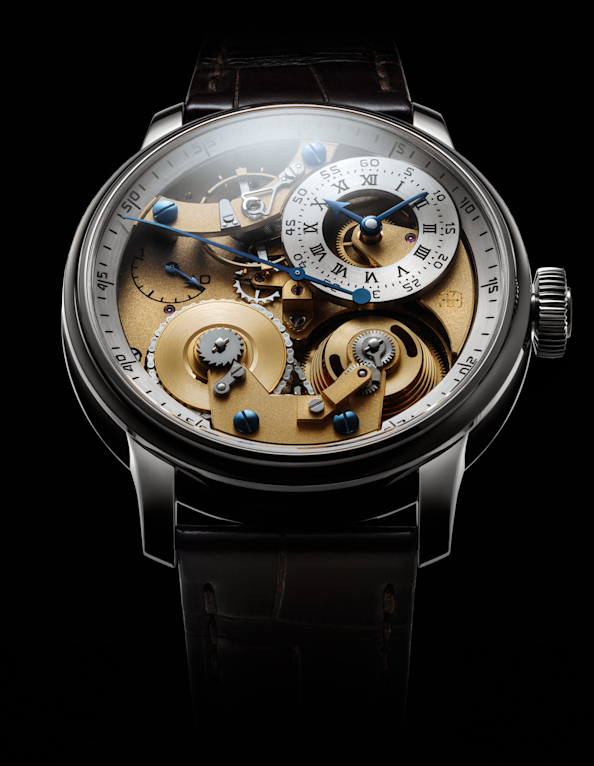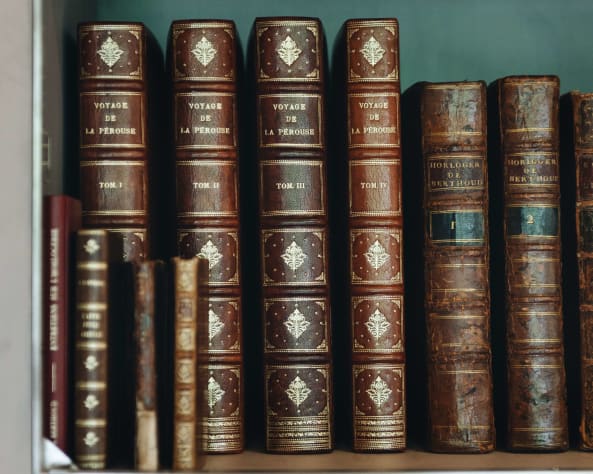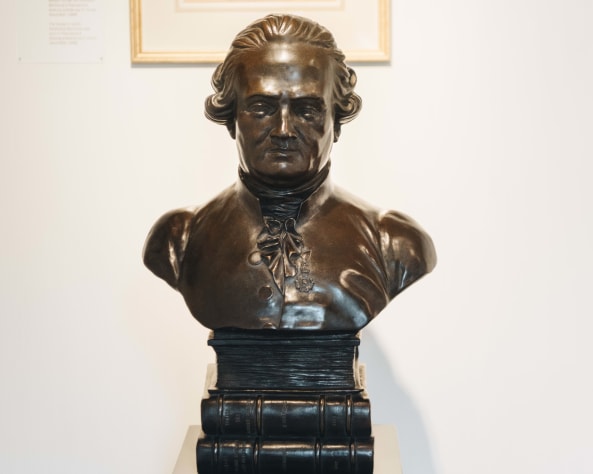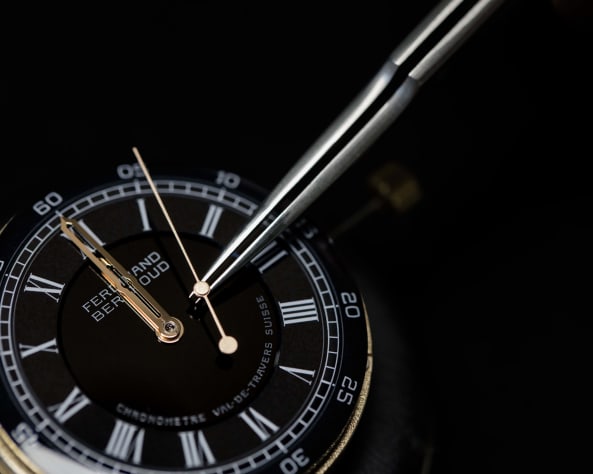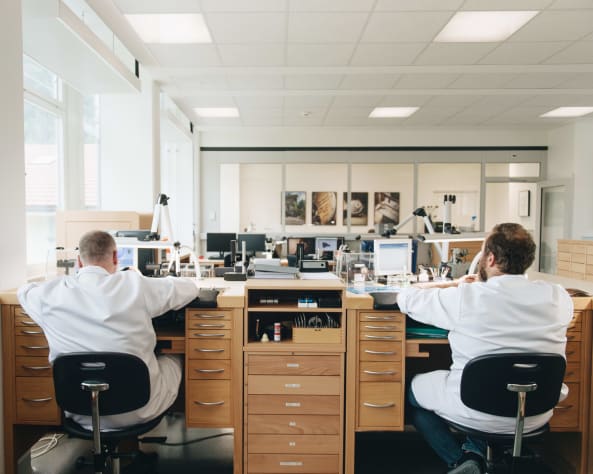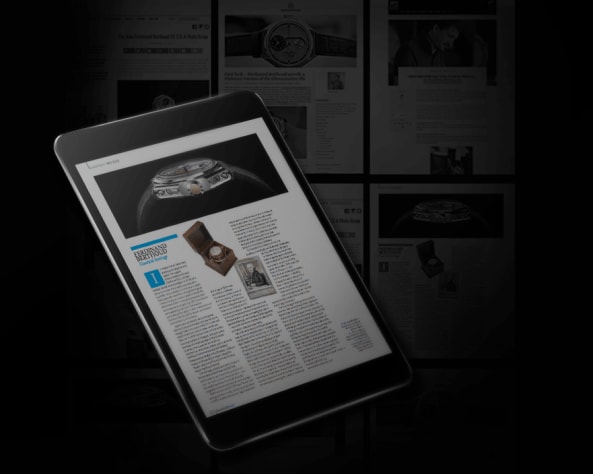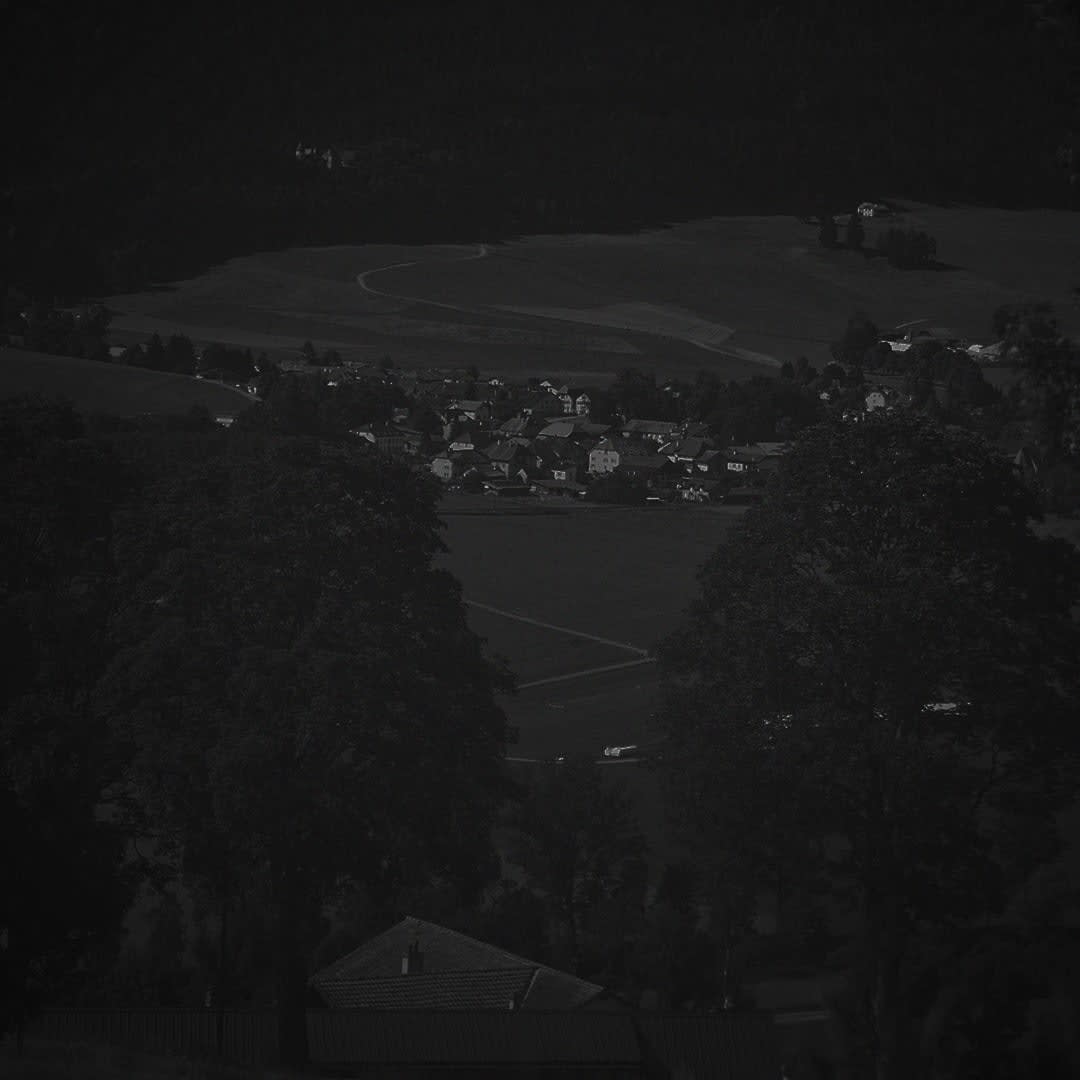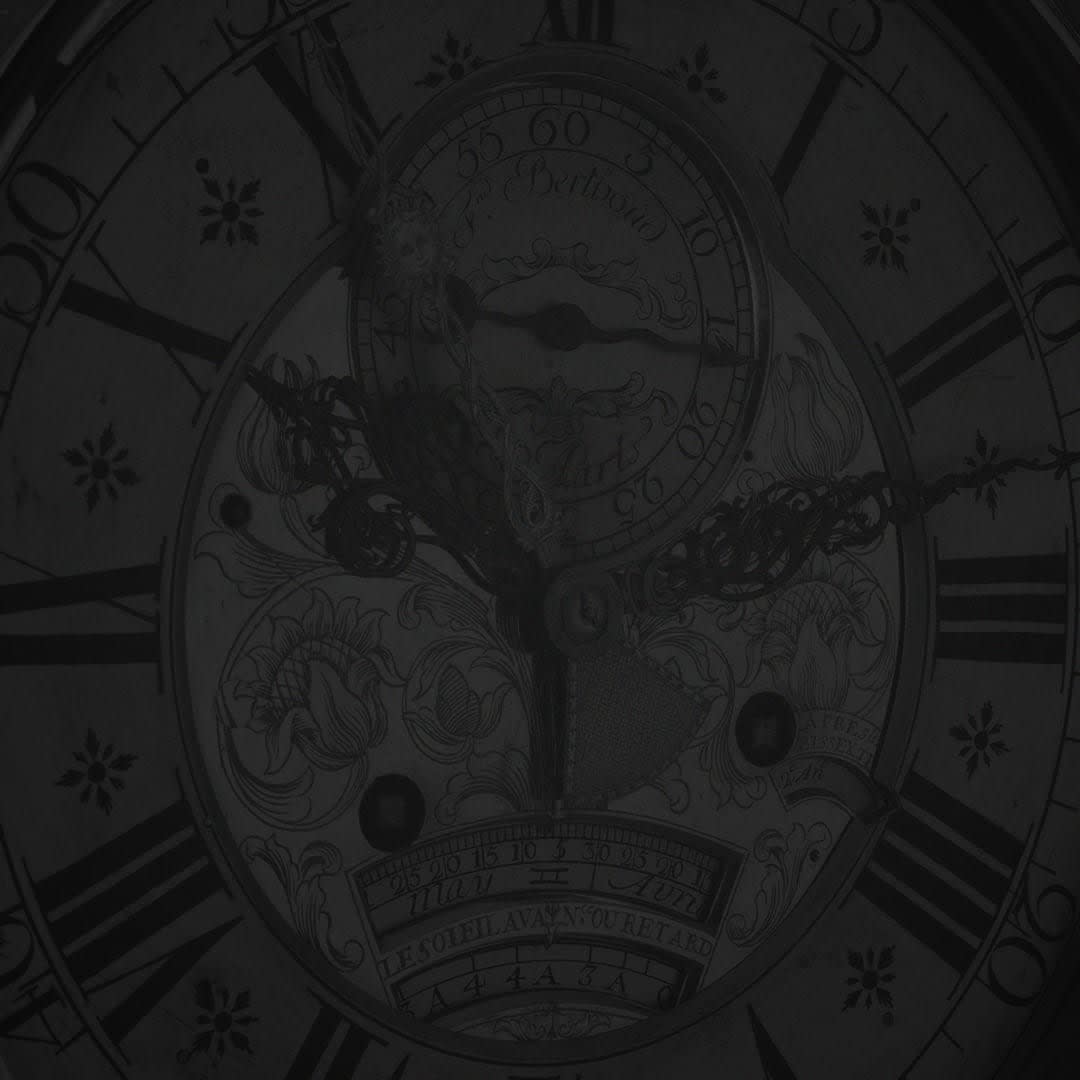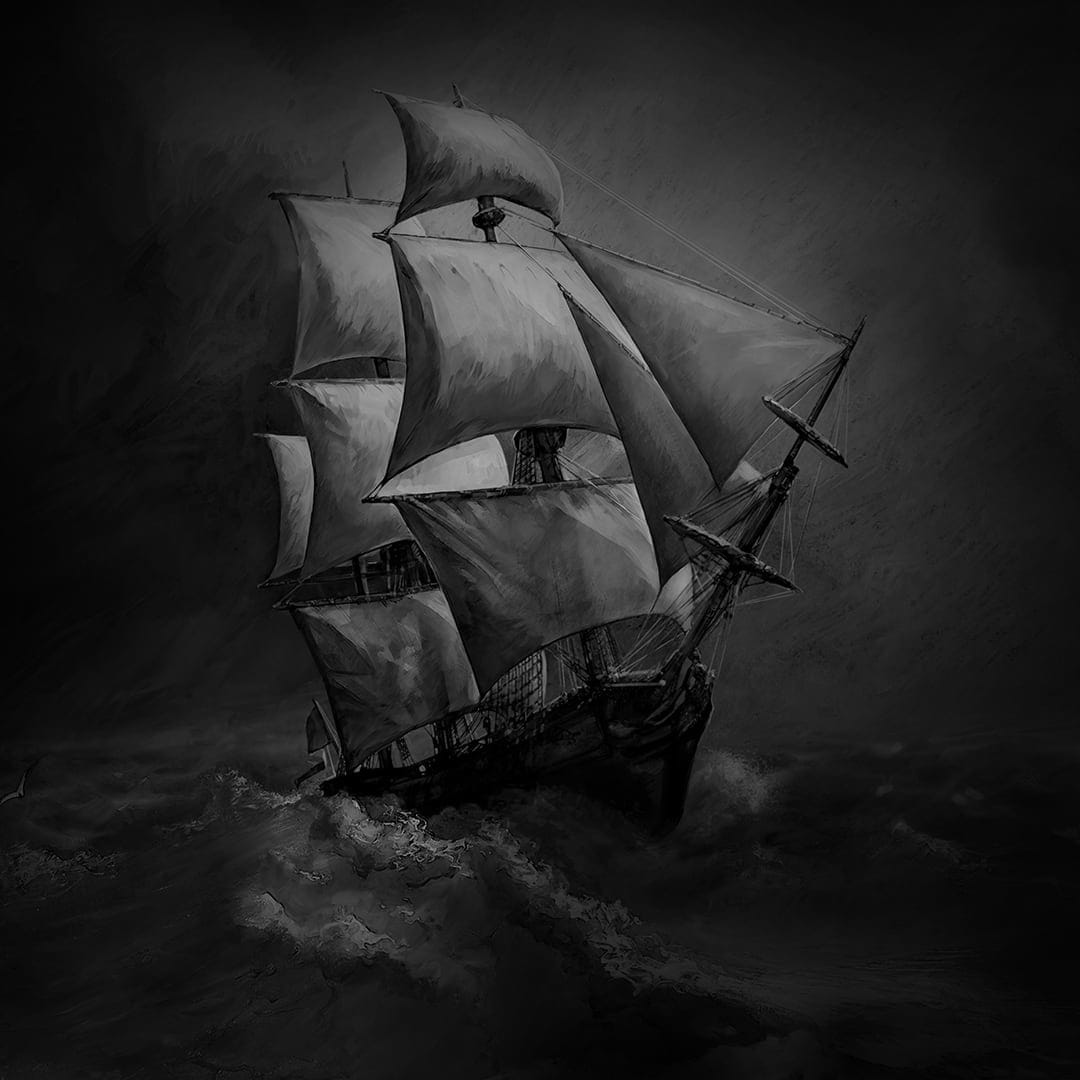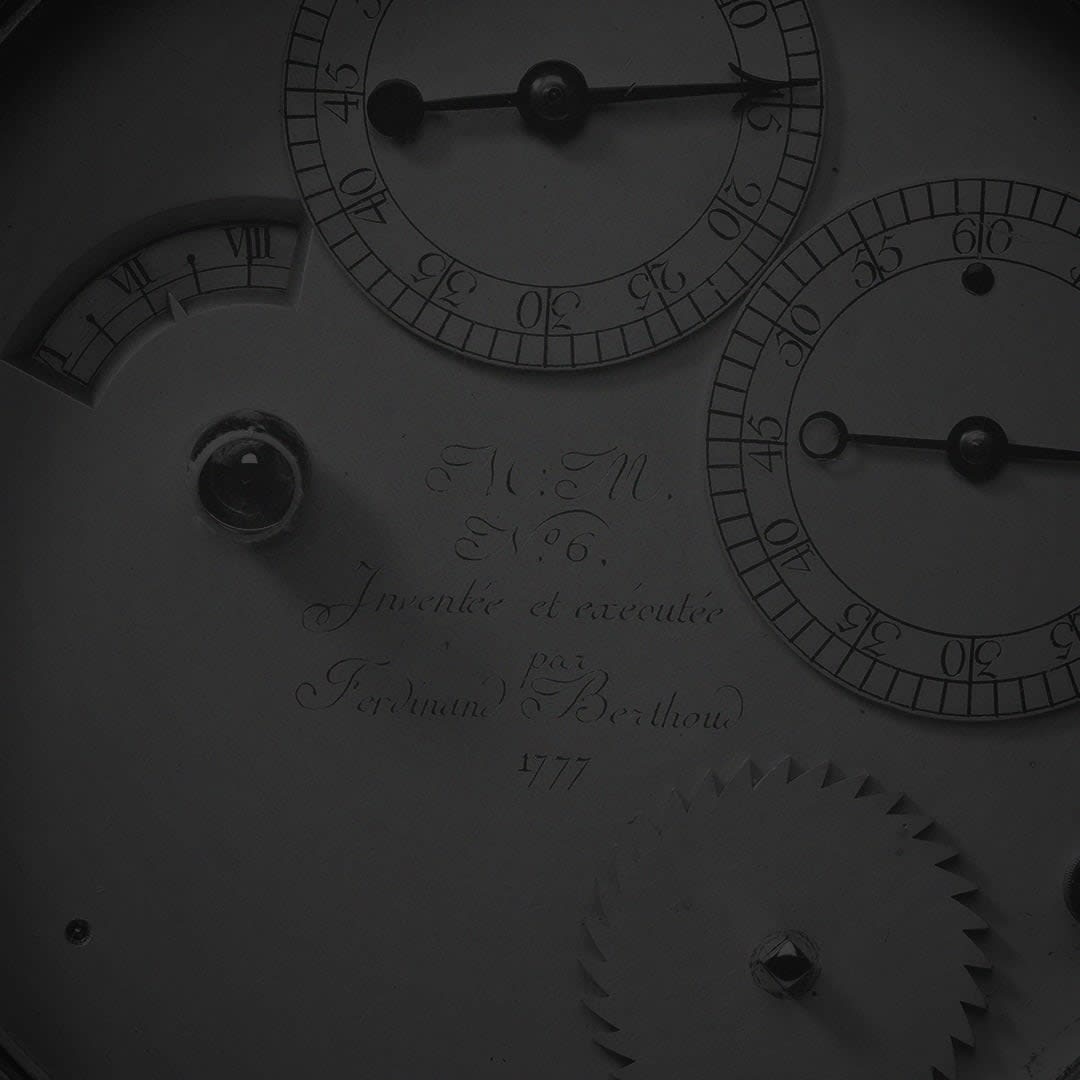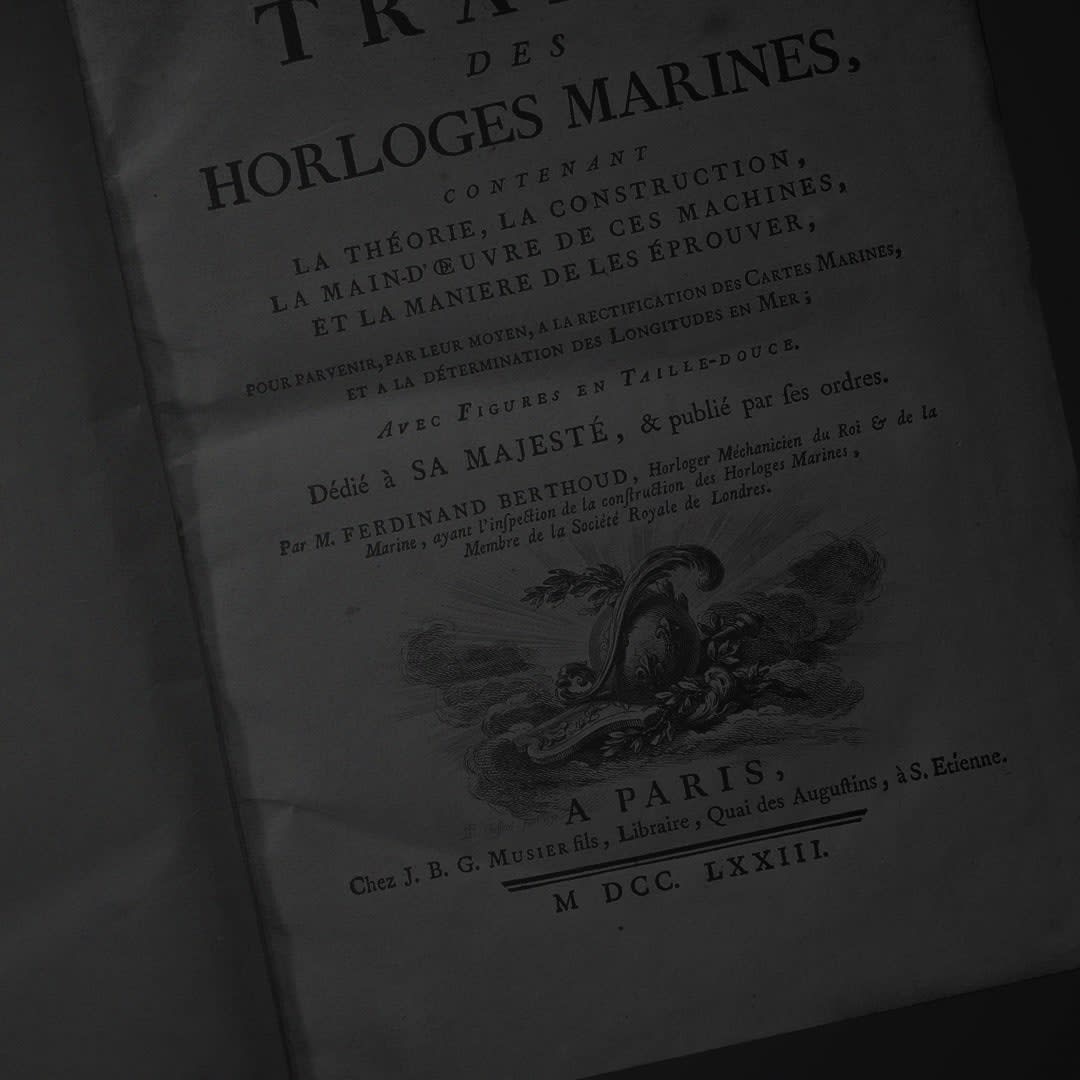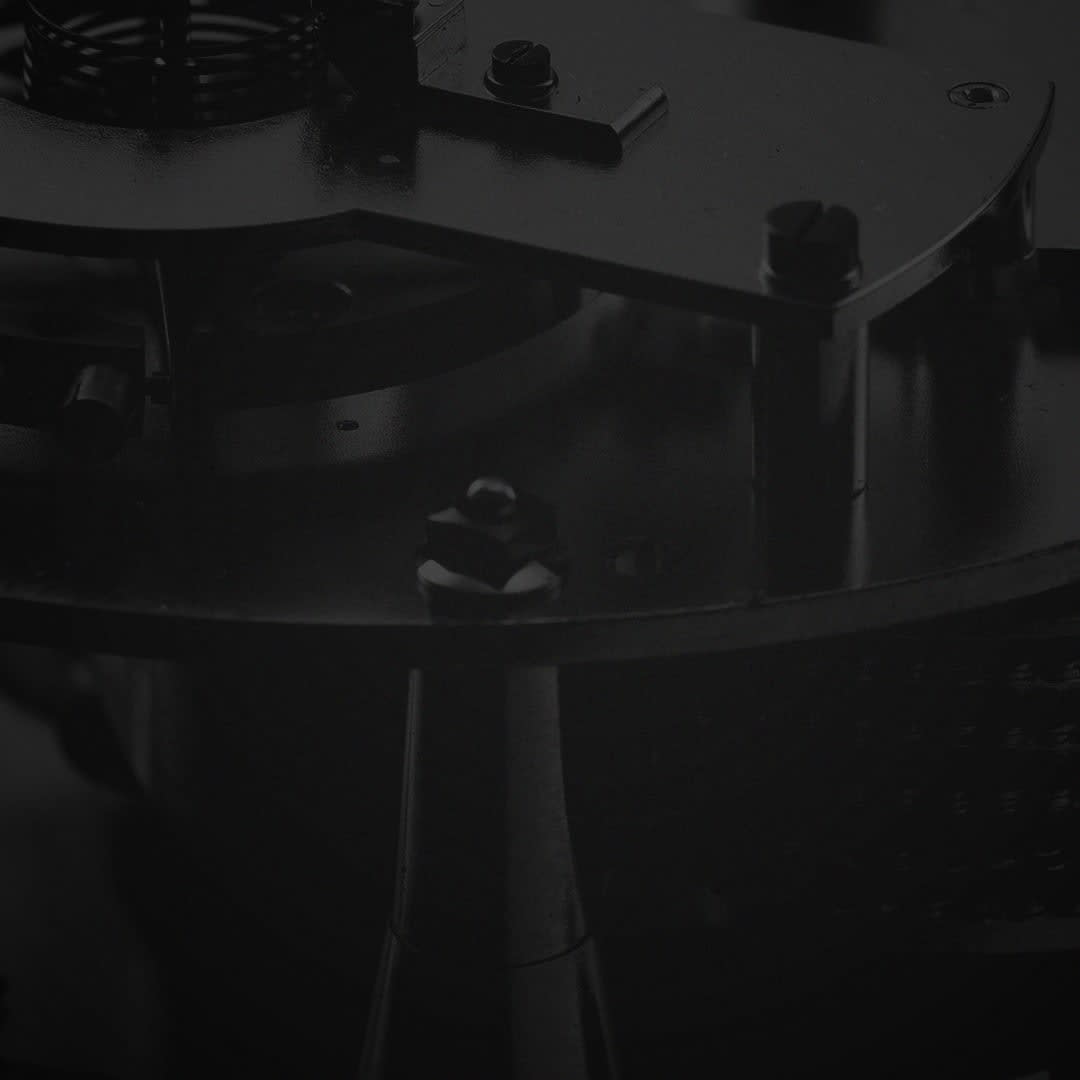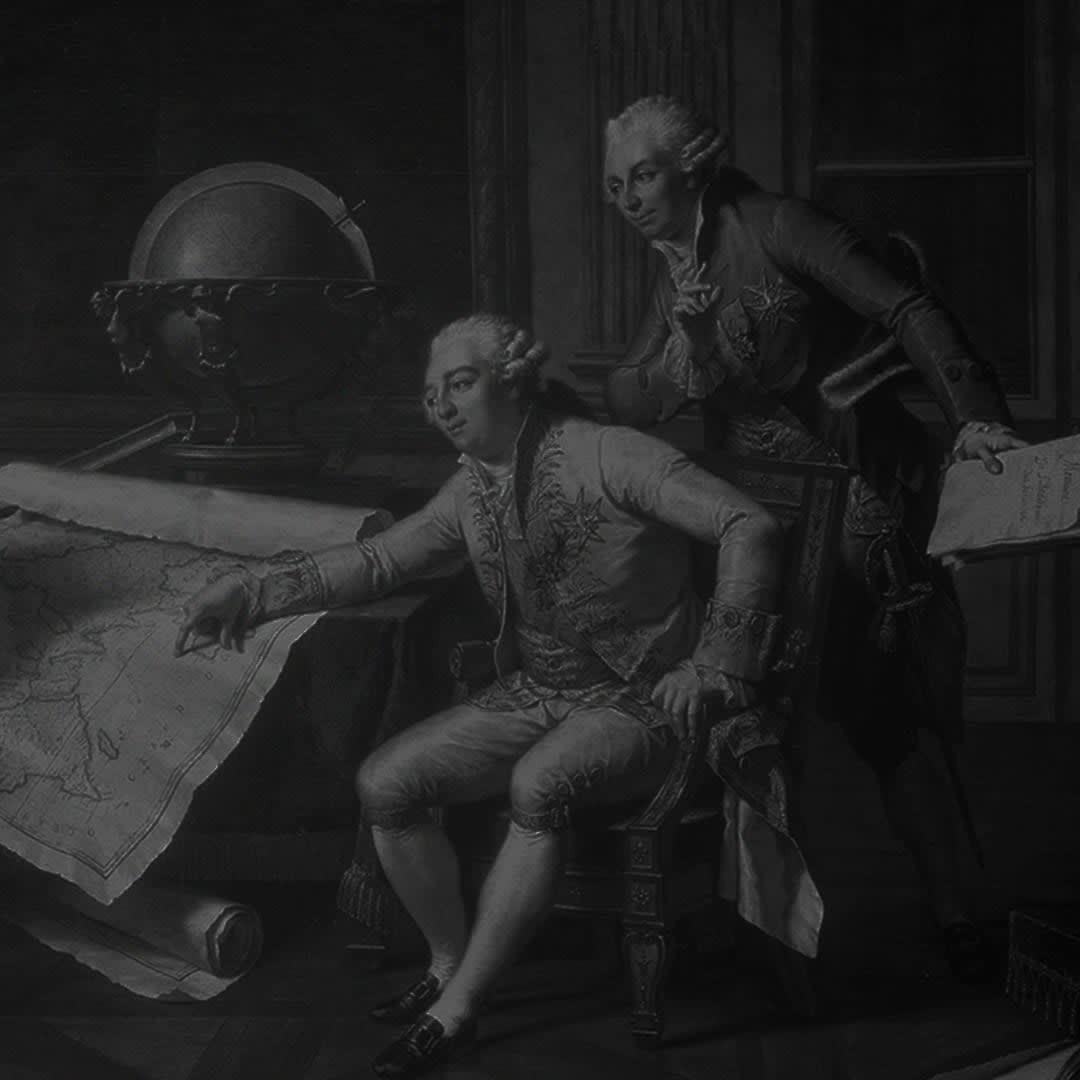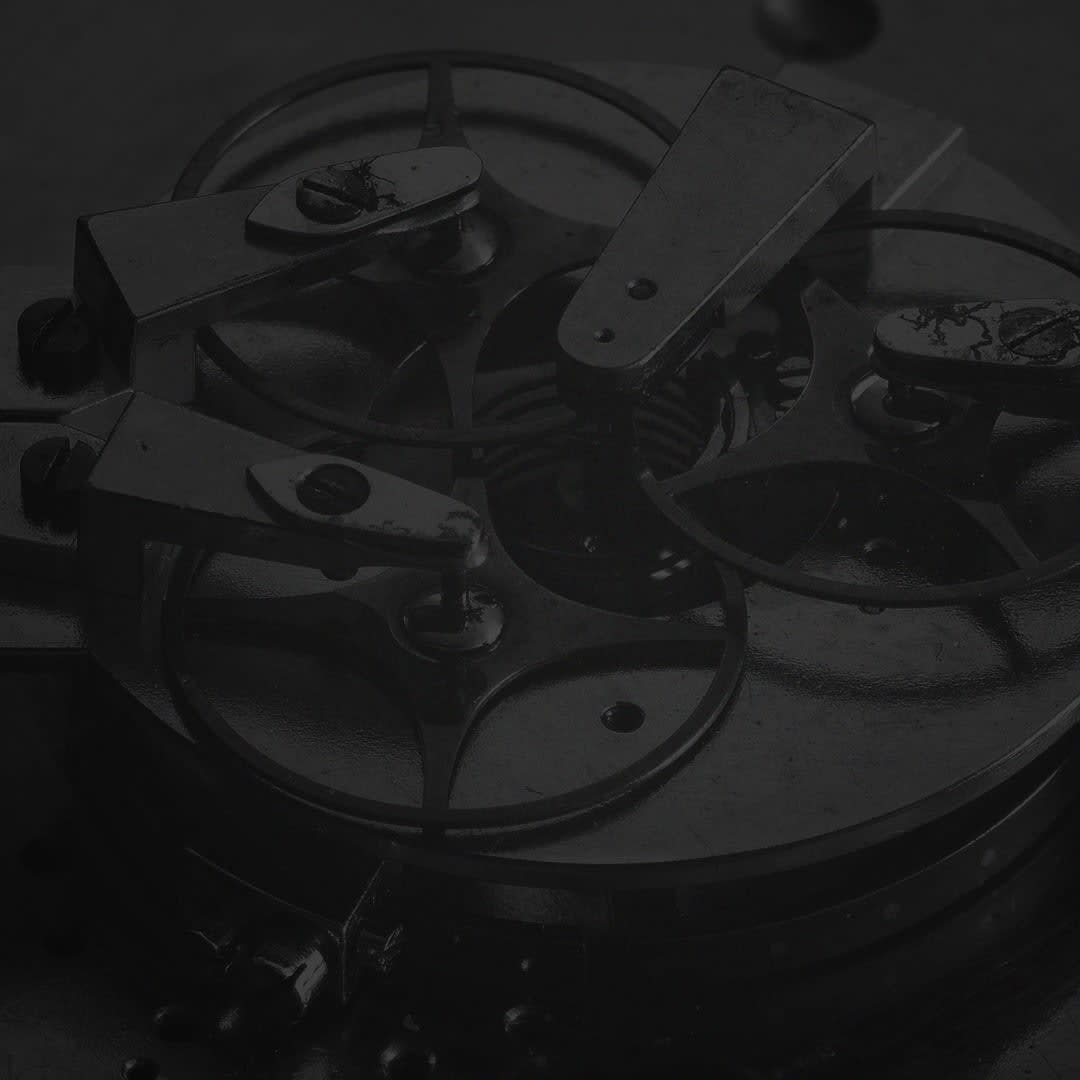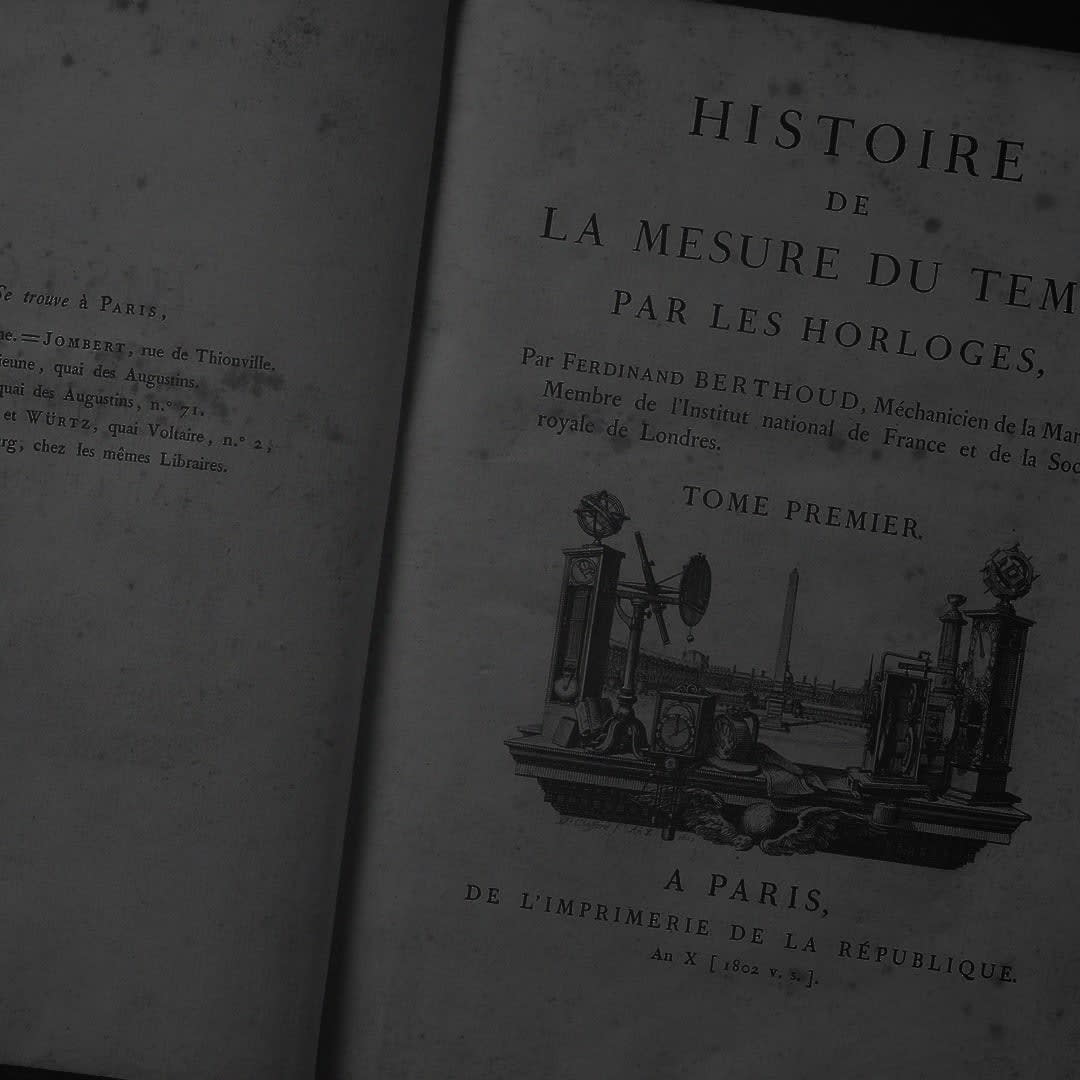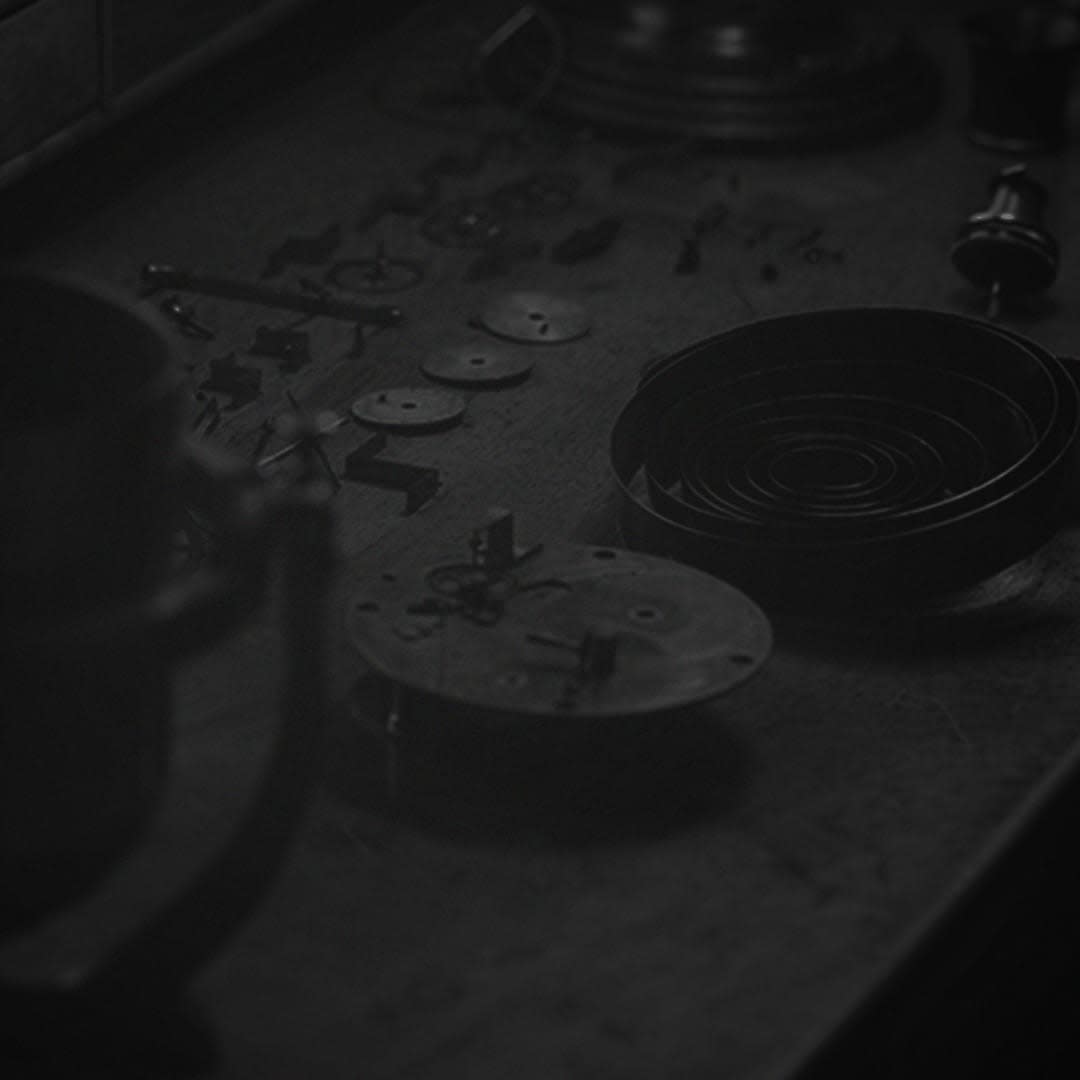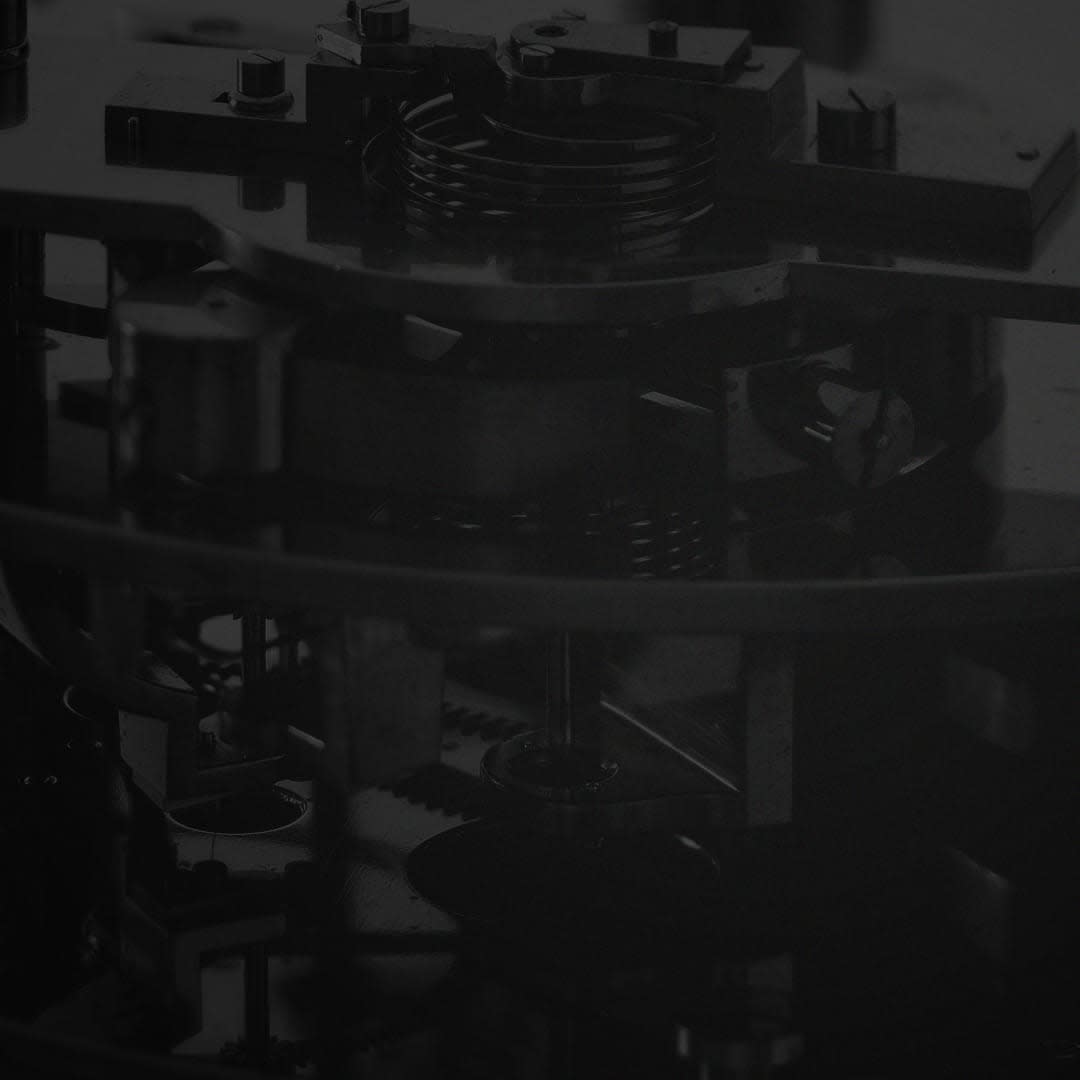Origins
Ferdinand Berthoud was born on March 18th 1727 to a family of distinguished clock- and watchmakers in Plancemont in the heart of the Val-de-Travers region of the canton Neuchâtel, Switzerland..
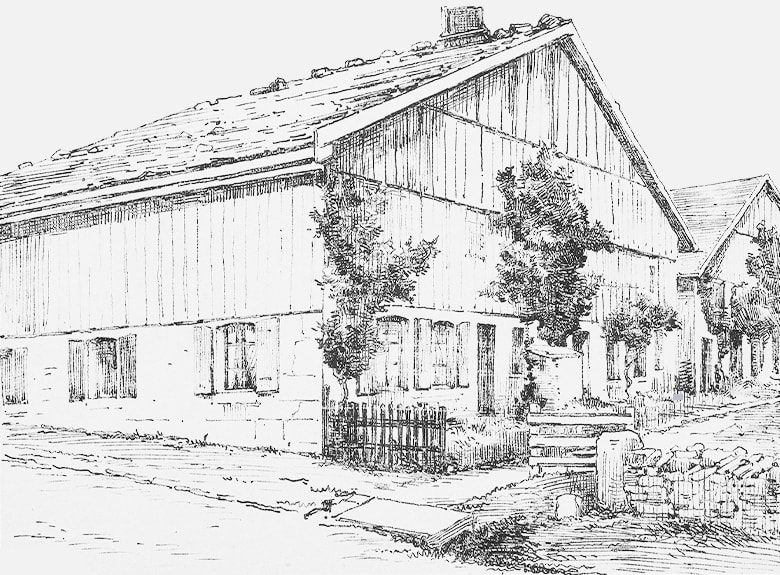
At the age of fourteen he was taken on by his brother, Jean-Henry, as a clockmaker's apprentice in Couvet, also receiving a sound scientific education. On April 16th 1745, aged 18, he moved to Paris, where he continued to hone his skills as a clockmaker. He employed his talents as a journeyman for the Parisian community of master watchmakers. During the reign of Louis XV (1710-1774), 18th century Paris was undergoing an unprecedented period of intellectual influence and scientific inquiry. This was the Age of Enlightenment. Knowledge was the holy grail of all scholars, writers and philosophers, whose research enjoyed the encouragement and support of The French Royal Academy of Sciences. This was the specific context in which Ferdinand Berthoud's expertise as a scientific engineer, his manual skill and his gift for mechanics were able to flourish, marking him out as one of the greatest horologists of all time.
Mastery
In 1752, Ferdinand Berthoud submitted to the French Royal Academy of Sciences an equation clock marking leap years, demonstrating his extraordinary mastery of the art of horology..
Academy members Charles-Etienne Camus (1699-1768), a mathematician and astronomer, and Pierre Bouguer (1698-1758), a mathematician, physicist and famous hydrographer, produced a glowing report on the quality of his work. On December 4th 1753, following a ruling from the King's Council in contradiction of by-laws and by special favour of the sovereign, Ferdinand Berthoud was officially granted the title of Master Watchmaker at the tender age of 26. Ferdinand Berthoud was so well respected in his field that, in 1755, he was commissioned to write several reference articles on horology for "L’Encyclopédie méthodique" (1) which was produced from 1751 to 1772 under the editorship of Diderot and D’Alembert In 1759, Ferdinand Berthoud published his first specialist work, "L’Art de conduire et de régler les pendules et les montres, à l’usage de ceux qui n’ont aucune connaissance d’horlogerie” (2).This highly successful popularising work was translated into several languages and reprinted numerous times during the 18th and 19th centuries.
Marine chronometers
Ferdinand Berthoud was passionate about measuring longitude. At the time, both France and England were offering substantial rewards to the first person to discover a practical method for accurately determining the east-west position of a boat on the ocean..

On December 13th 1760, Ferdinand Berthoud presented his "Mémoire sur les principes de construction d’une Horloge de Marine”(1) to the French Royal Academy of Sciences, in which he described the famous Marine Clock no. 1, completed in early 1761. Two years later, he published a two-volume horological treatise: "Essai sur l’horlogerie; dans lequel on traite de cet Art relativement à l’usage civil, à l’Astronomie et à la Navigation, en établissant des principes confirmés par l’expérience”(2). This work was translated into German in 1795 and reprinted numerous times. In 1763, Ferdinand Berthoud was appointed by the King to examine the John Harrison's H4 Marine Timekeeper in London. Harrison categorically refused to let Berthoud see the clock. However, his journey opened the doors to the English scientific fraternity, thanks to the importance of his horological work and publications, and on February 16th 1764 he was appointed a "foreign associate member" of the Royal Society in London. The following year, Berthoud produced two Marine Clocks, known as the No. 2 and No. 3. The watch known as the No. 3 was presented to the French Royal Academy of Sciences in 1761 as the No. 1.
(1) Submission on the construction principles of a Marine Clock
(2) Essay on horology, examining the art in relation to civil use, astronomy and navigation and establishing principles confirmed by experience.
Voyage made by order of the king, Fleurieu
On May 7th 1766, Berthoud submitted a memorandum to the duke of Praslin, comte de Choiseul and Minister of the Navy, detailing his plans for the construction of the no. 6 and no. 8 Marine Clocks..
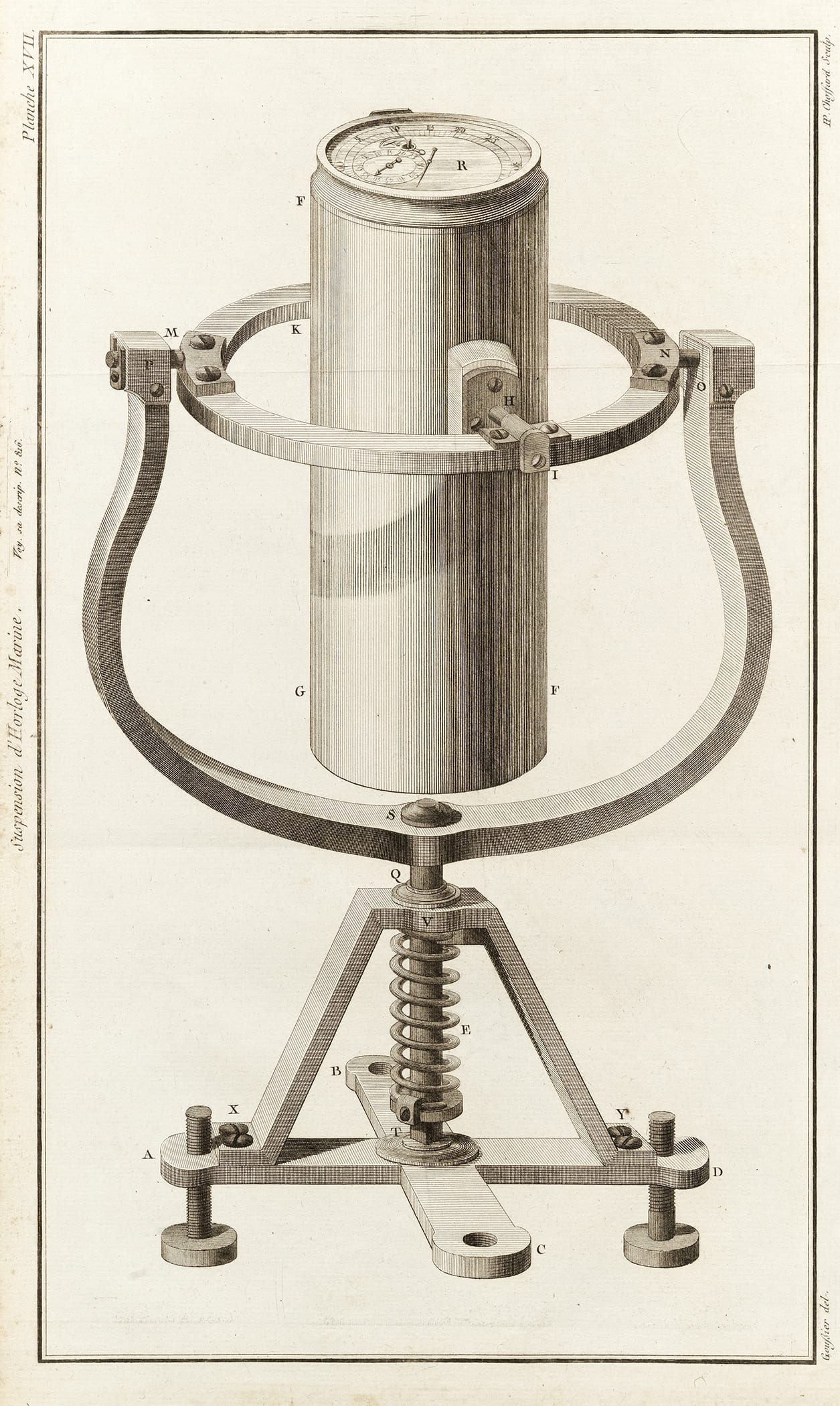
Two years later, the Duke of Praslin presented Marine Clocks No. 6 and No. 8 to the Count of Fleurieu, a French explorer, hydrographer and Lieutenant of the Royal Ships. His aim was to test the timepieces during a voyage from Rochefort to Santo Domingo and back aboard a corvette called “L’Isis”. The timepieces successfully withstood the conditions encountered on the 18-month journey. Marine Clock No. 8 was used to determine the actual position of the boat on a map, and to calculate the longitude to the nearest half degree based on astronomical observations. A first for the French Royal Navy. The results of the Count of Fleurieu's observations were published in 1773 under the title "Voyage fait par ordre du roi, pour éprouver les horloges marines”(1). In parallel, Ferdinand Berthoud pursued his research. In seeking to improve precision, he worked both on the reliability of escapements and on compensating for the effects of temperature variations, discovering a compensation mechanism in 1768 and working on different versions. In 1769, Ferdinand Berthoud invited his nephew, Pierre-Louis Berthoud (1754-1813), commonly known as Louis Berthoud, a talented young watch- and clockmaker, to make the journey from Couvet (Switzerland) to Paris to continue his apprenticeship. Louis assisted him in the production and maintenance of the marine clocks he supplied to the French and Spanish navies.
(1) Voyage made by order of the king to test Marine Clocks
Watchmaker-mechanic to the king and to the navy
On April 1st 1770, following the successful testing of Marine Clocks no. 6 and no. 8, Ferdinand Berthoud was awarded the warrant of Watchmaker-Mechanic to the King and to the Navy, receiving a royal commission for 20 timepieces..
This required him to supply the French admiralty with "longitude clocks" for the numerous cartographic and hydrographic surveys that were conducted in the late 18th century. In 1771, he equipped the Marine Watch No. 3 with a pivoted detent escapement instead of the double virgule escapement previously used. In 1773, Berthoud published "Traité des horloges marines contenant la théorie, la construction, la main-d’œuvre de ces machines et la manière de les éprouver, pour parvenir par leur moyen, à la rectification des cartes marines et à la détermination des longitudes en mer”(1). This treatise represented a first, as it described all the elements required to construct a marine clock. Two years later, Ferdinand Berthoud produced a new work entitled "Les longitudes par la mesure du temps ou méthode pour déterminer les longitudes en mer avec le secours des horloges marines, suivie du recueil des tables nécessaires au pilote pour réduire les observations relatives à la longitude et à la latitude”(2). Between the presentation to the French Royal Academy of Sciences of his first Marine Timepiece and its creation in 1761, and the end of 1773, Berthoud produced and supplied to the Admiralty around a dozen weight-driven and spring-driven clocks, all developed to measure the time at sea and calculate longitude.
(1) Treatise on marine clocks containing the theory, construction and labour for these machines and the method for testing them for use in correcting nautical charts and determining longitude at sea
(2) Longitudes through the measurement of time, or method for determining longitude at sea using marine clocks, including the tables required by the captain to reduce observations relating to longitude and latitude
Birth of a dynasty of master watchmakers
In 1775, preoccupied with perfecting his marine clocks, Ferdinand Berthoud entrusted the running of his Paris workshop to his nephew, Henry Berthoud, who was responsible for producing high-quality decorative clocks and watches for the public..
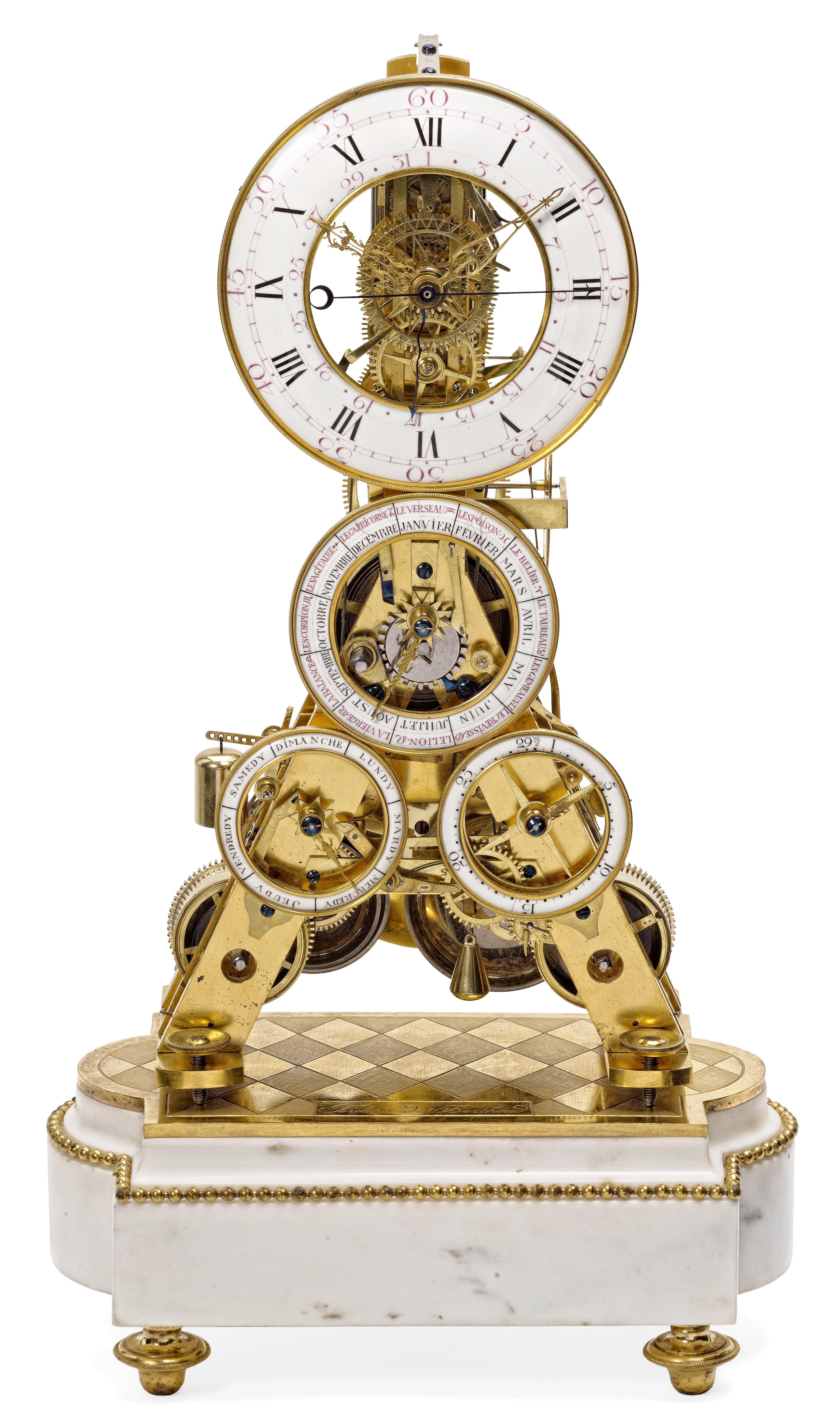
When Henry died in 1783, Ferdinand handed the reins to his other nephew, Pierre-Louis Berthoud (known as Louis Berthoud) who, since 1769, had assisted him in the construction of Marine Clocks and who distinguished himself as an excellent manager. Demonstrating a remarkable talent, in 1784 Louis Berthoud was awarded the title of "Apprentice Watchmaker-Mechanic to the Navy" following delivery of the first longitude pocket watch to the Prince of Asturias, the future King Charles IV of Spain.
The La Pérouse expedition
In 1785, Berthoud presented five clocks - numbers 18 and 19 (weight-driven) and numbers xxv, xxvii and xxix (spring-driven) to the count of la Pérouse, captain of a ship called "L’Astrolabe".

He set sail on August 1st on a round-the-world voyage to continue the discoveries made in the Pacific Ocean by the famous British explorer and cartographer, James Cook. After nearly three years at sea, the clocks were lost when the "Astrolabe" was tragically wrecked off the Solomon Islands in June 1788. The incident claimed the lives of the Count of La Pérouse and most of his crew. In 1787, Ferdinand Berthoud published "De La Mesure du Temps ou supplément au traité des horloges marines et à l’Essai sur l’horlogerie, contenant les principes d’exécution, de construction et d’épreuves des petites horloges à longitudes et l’application des mêmes principes de construction aux montres de poche, ainsi que plusieurs constructions d’horloges astronomiques”(1). In 1792, he edits the "Traité des montres à longitudes, contenant la construction, la description & tous les détails de main-d’œuvre de ces Machines ; leurs dimensions, la manière de les éprouver, etc.". In it, he explains that he has created around 50 Longitude Clocks and Watches, mostly for the French Navy but also for the Spanish ones, as well as for officers of the merchant navy. Ferdinand Berthoud lists in this book the instructed campaigns and the delivered timepieces.
(1) On measuring time, or supplement to the treatise on marine clocks and the essay on horology, containing the principles for the execution, construction and testing of small longitude clocks and the application of the same construction principles to pocket watches, including several astronomical clock constructions
Decimal time
The secular and republican calendar, or French revolutionary calendar, was created during the French revolution and used from 1792 to 1806. Year I of the calendar began on September 22nd 1792 (the first of Vendémiaire, Year I of the republic)..
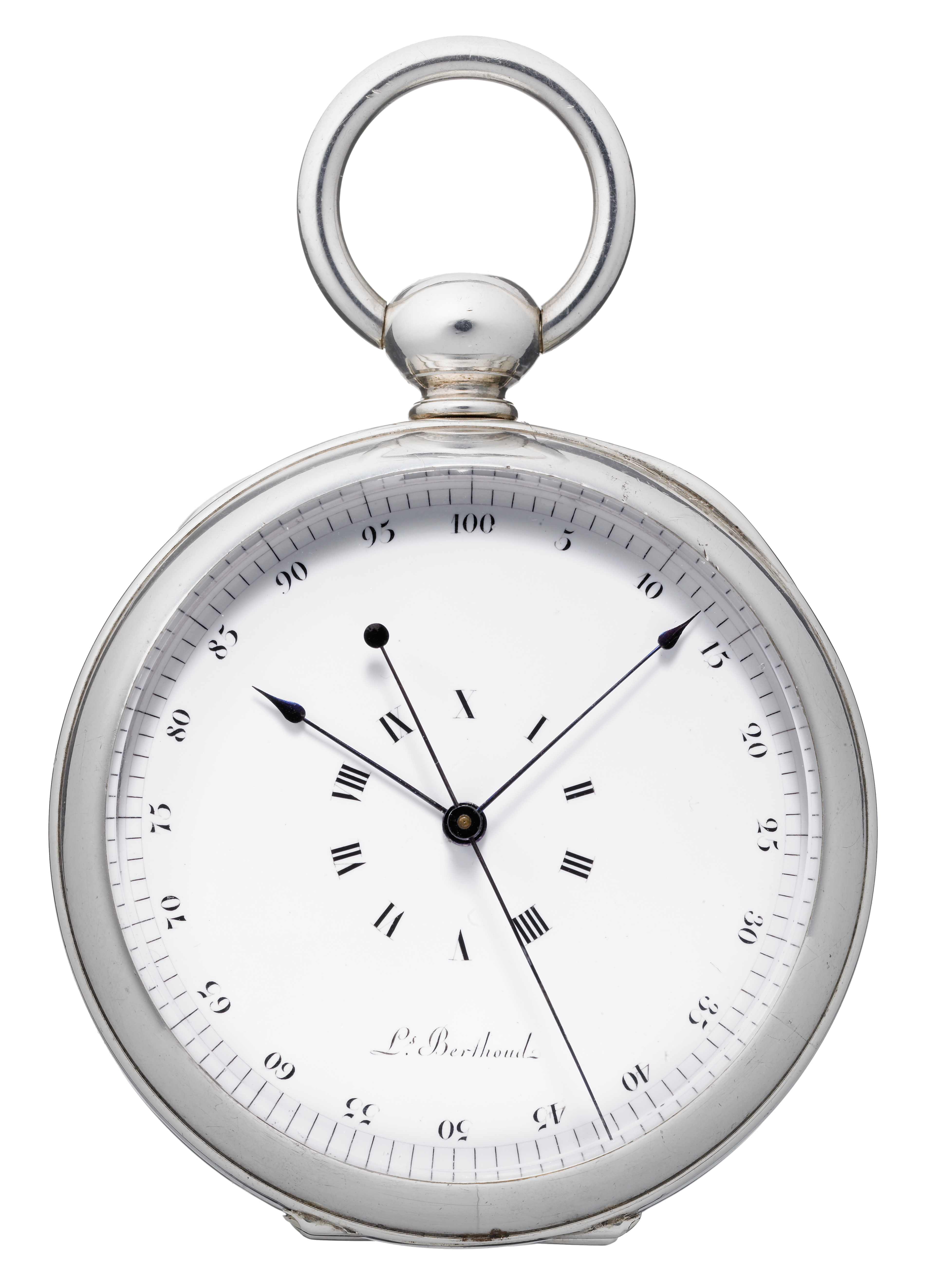
This calendar demonstrated the revolutionaries’ desire to adopt a universal system for measuring time based on the decimal system and no longer linked to the monarchy, by replacing the Gregorian calendar used by Christians since 1582. It was characterised in particular by a new way of dividing the year and new names for the months and days. Decimal time was thus officially introduced in France on October 5th 1793 (fourteenth of Vendémiaire, Year II). Reformers abolished the day's 24-hour divisions and its sexagesimal sub-divisions. They decreed that from midnight to midnight, the day would be divided into 10 hours, each sub-divided into 100 decimal minutes made up of 100 seconds. That same year, Louis Berthoud delivered his first marine pocket chronometer featuring the decimal system, known as No. 26, to the French mathematician, political scientist and naval engineer Jean-Charles de Borda (1733-1799). Decimal clocks and watches are rare, and this chronometer was probably the first to use the decimal system. Two years later, and ten years before the abolition of the revolutionary calendar, the law of the eighteenth of Germinal, Year III (April 7th 1795) abolished decimal time in France.
The time of recognition
In 1795, Ferdinand Berthoud was appointed a first class resident member of the Mechanical Arts section of the Institut National..
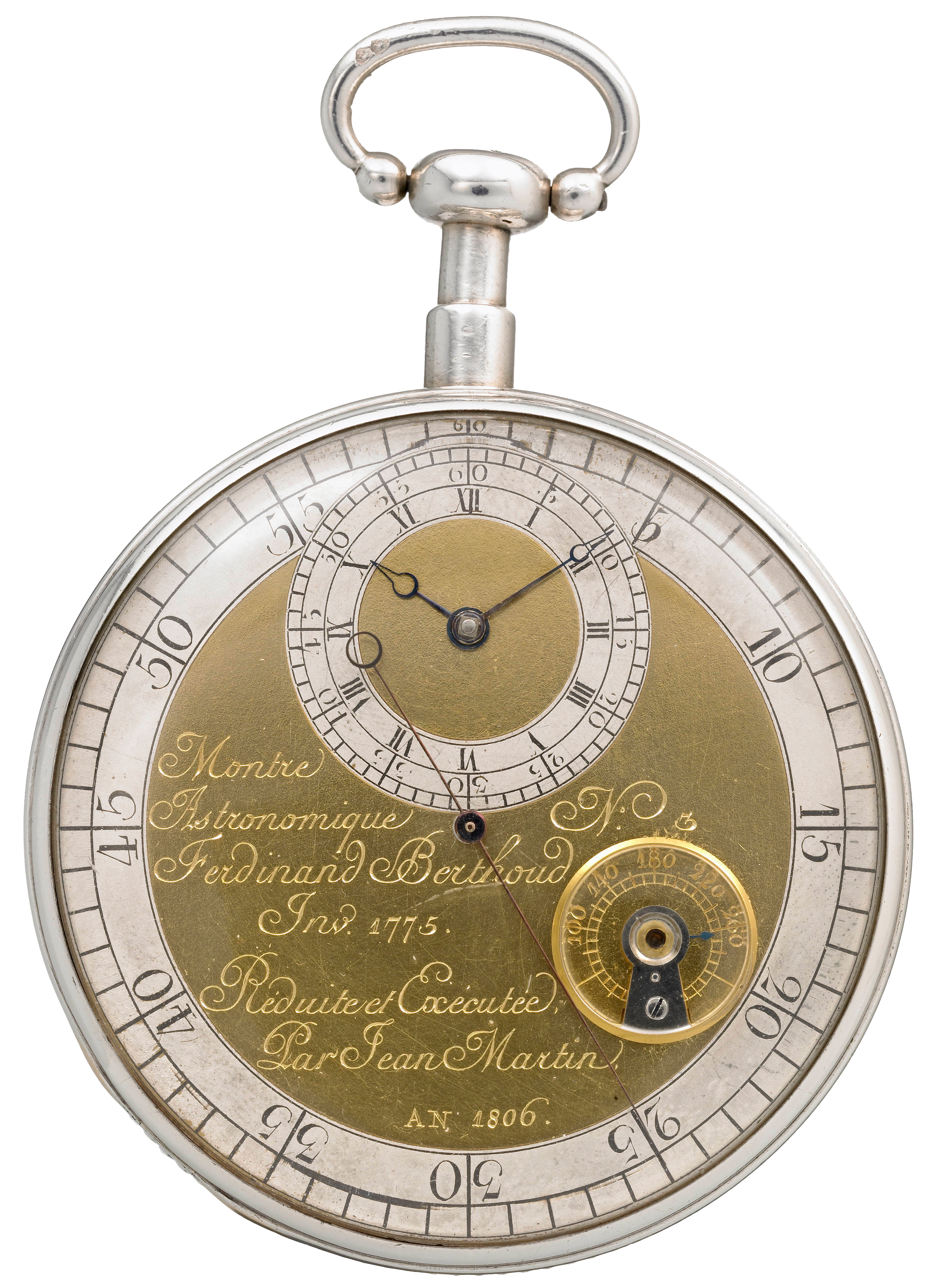
In 1797, Louis Berthoud was awarded the "Institut des Sciences et des Arts" prize for his chronometers No. 27, produced for the Count of Fleurieu in 1795, and No. 32, with decimal time division. In 1802, after many years of research, Ferdinand Berthoud published one of his most important works: "Histoire de la mesure du temps par les horloges”(2), in which he demonstrated his exceptional knowledge of the art of horological mechanics. In the same year, Louis Berthoud was appointed Watchmaker-Mechanic to the Navy and in 1805, Watchmaker to the Paris Observatory and the Bureau des Longitudes. In 1804, Napoleon awarded Ferdinand Berthoud the title of Knight of the Legion of Honour as a member of the Institut National. His work earned him a special place in the history of science and technology, in particular the art of marine chronometry. He is the only horologist to have published the complete results of his research in a methodical and detailed manner, allowing his pieces to be reproduced exactly.
(1) History of time measurement using clocks
One of the greatest horologists of all time
In 1807, Ferdinand Berthoud published his last work, entitled "Supplément au traité des montres à longitudes avec appendice contenant la notice ou indication des principales recherches ou des travaux faits par Ferdinand Berthoud sur diverses parties des machines qui mesurent le temps depuis 1752 à 1807 (…) (1)..

On June 20th, he died, childless, at the age of 80. He is buried at Groslay, in the Montmorency valley (Val d’Oise department), where a monument stands in his memory. An exceptional horologist with an extraordinary spirit, Ferdinand Berthoud left a particularly large body of work, both in the field of marine chronometers, decorative clocks and watches, specialist tools and scientific measuring instruments as well as dozens of specialist published works and articles comprising over 4,000 pages and 120 engraved plates.
(1) Supplement to the treatise on longitude watches with appendix containing particulars or indications of the main research or work carried out by Ferdinand Berthoud on various parts of time measuring machines from 1752 to 1807 (…)
Three generations of master chronometer-makers
Six years later, on September 18th 1813, Louis Berthoud died prematurely in Argenteuil. Although he had sadly had no time to publish the results of his work, he left several volumes of handwritten notes. His chronometers were of particular interest to the scientists and naval officers of his time, on account of their extreme accuracy and elegance..
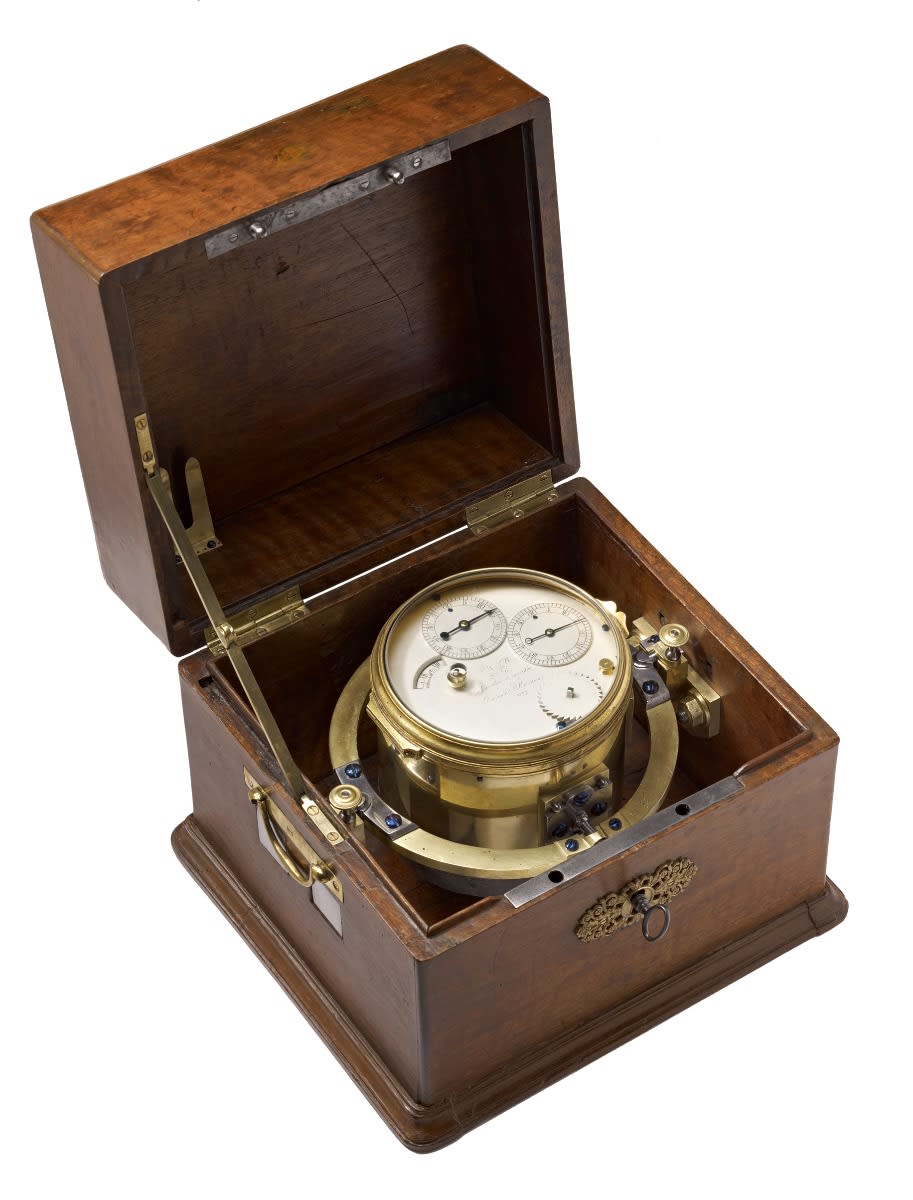
Louis' work was continued by his two sons, Jean-Louis Berthoud (1793-1880) and Charles-Auguste Berthoud (1798-1876), who were trained by Henri Motel, one of Louis Berthoud's former students. The two brothers established a company specialising in "nautical horology mechanics” in Paris and Argenteuil that was held in high esteem by navigators and scholars thanks to the unrivalled accuracy of its chronometers. Their timepieces bore the signature "Berthoud Frères". Charles-Auguste Berthoud was awarded a silver medal for an exhibition of French industrial products in 1819. He received the distinction again in 1823 and 1827, before being awarded the gold medal in 1834, 1844 and 1849, as well as the title of Knight of the Legion of Honour. Charles-Auguste Berthoud died in Paris on February 15th 1876. He is estimated to have produced around 350 marine chronometers. From that point on, no more marine chronometers would bear the illustrious name of Berthoud.
